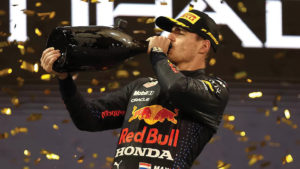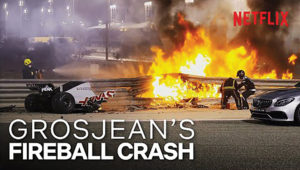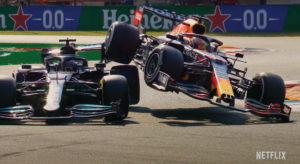
by Steve Wade
Every sports fan has his or her favourites. My own personal choices are golf, football and horseracing, with the odd major event from other sports getting the occasional look in. I had no interest in motor sports of any kind, least of all F1 racing, although I knew it was hugely popular here amongst the expat community. Recently I was wading through some of the new series that were due on the box this year, as you do, and I read that a series about F1 had been voted one of the top ten programmes that Netflix had ever produced. The fourth series had just dropped and I decided to take a look, even though as I said earlier, I had no previous interest in the subject.
through some of the new series that were due on the box this year, as you do, and I read that a series about F1 had been voted one of the top ten programmes that Netflix had ever produced. The fourth series had just dropped and I decided to take a look, even though as I said earlier, I had no previous interest in the subject.
What an eye opener. F1 – Drive to Survive was compulsive viewing from start to finish. It may well have helped that I knew absolutely nothing about the subject beforehand so that everything was coming to me completely fresh but nonetheless, it was exciting and entertaining stuff.
 Excuse me if you’re an F1 fan and know much more about the sport than I do, but some things that I discovered as I was watching the show really surprised me. First of all, the number of crashes there are! Of course, these incidents only break out in prime time news if someone loses their life, that’s the nature of news, but not a race goes by without one of these multi-million dollar cars crashing into the side wall of the track, usually as a result of the fiercely competitive nature of the drivers trying to overtake each other and colliding first.
Excuse me if you’re an F1 fan and know much more about the sport than I do, but some things that I discovered as I was watching the show really surprised me. First of all, the number of crashes there are! Of course, these incidents only break out in prime time news if someone loses their life, that’s the nature of news, but not a race goes by without one of these multi-million dollar cars crashing into the side wall of the track, usually as a result of the fiercely competitive nature of the drivers trying to overtake each other and colliding first.
One particular episode in the third series shows a crash where the car literally explodes into a ball of fire and it seems impossible that the driver can survive, but he does. He has some injuries to his feet and hands but actually walks away from the car and fully recovers afterwards. The show talks about the improvements in safety standards in the last few years and it shows, on the car itself and what the driver must have been wearing. The trickle down effect for the production cars that you and I drive must be invaluable.
Another thing that struck me was the competition to become an F1 driver in the first place. There are only twenty spots on the grid so the opportunities are extremely limited for any potential F1 Drivers and from the many thousands that are called, very few are chosen, and once a driver gets there, they’ll do whatever it takes to stay there, hence the frightening intensity of the rivalry on the track.
me was the competition to become an F1 driver in the first place. There are only twenty spots on the grid so the opportunities are extremely limited for any potential F1 Drivers and from the many thousands that are called, very few are chosen, and once a driver gets there, they’ll do whatever it takes to stay there, hence the frightening intensity of the rivalry on the track.
One thing that I have always recognised is the amount of skill and talent involved to become an F1 driver. They also need complete dedication to the job, immense concentration, bravery and a high level of fitness to become successful and keep the place in the line up that was so hard to get in the first place. The ten teams that have only two cars each in the starting line up will waste no time in replacing a driver if he is not performing and getting the best from his own particular vehicle.
The sport has a tremendous fan base all over the world and well over 100,000 people turn up when they are allowed, at Silverstone in the UK and various other locations to watch these events over the three days of practice, qualifying and the race itself. The 2022 season is staging twenty three races worldwide and with the pandemic restrictions now lifted I’m sure the fans will flock back to watch the racing live again.
I’m sure that all you F1 fans out there have already seen the series and it has come in for some criticism for over dramatising some situations and staging certain scenes which I’m sure the seasoned fan would have noticed. For me as a newcomer to the sport, I thought it was an entertaining ride from start to finish and would thoroughly recommend it to anyone who enjoys watching competitive action. The series are very well produced with high production values and have been nominated and won awards both in Europe and the USA. So, if you’re looking for something to watch at the moment and most of us always are here in Expat land, give it a try. I think it may have turned me into an F1 fan!
fans out there have already seen the series and it has come in for some criticism for over dramatising some situations and staging certain scenes which I’m sure the seasoned fan would have noticed. For me as a newcomer to the sport, I thought it was an entertaining ride from start to finish and would thoroughly recommend it to anyone who enjoys watching competitive action. The series are very well produced with high production values and have been nominated and won awards both in Europe and the USA. So, if you’re looking for something to watch at the moment and most of us always are here in Expat land, give it a try. I think it may have turned me into an F1 fan!
